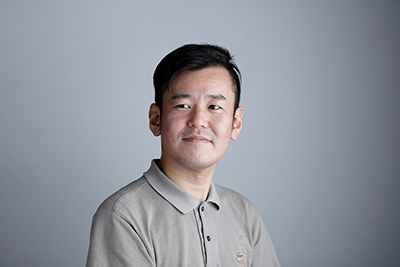The screening of the Good Design Award 2017 was implemented by the "Screening Units", the groups by design category. Here are the review texts by the Units including the trends, features or goals to aim of the category.
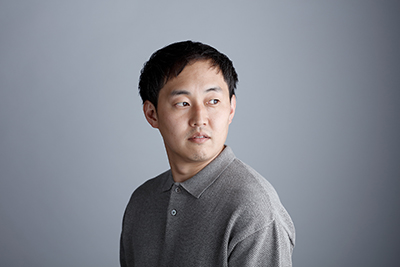
-
Art Director / Designer
- Unit 01 : Life products (Household items)
01-01 Accessorioes and Personal belongings / 01-02 Stationery / 01-03 Educational materials and tools / 01-04 Clothing / 01-05 Childcare items and accessories / 01-06 Toys / 01-07 Other household items
As the judges for Unit 01, we deal with a wide variety of miscellaneous items within the category of life products, such as stationery, watches, glasses, luggage, underwear and educational tools. Many of them are small enough to fit on the palm of the hand. The majority of items are commonly seen in our lives up to the moment they are laid out in front of the judges. We all take those small things for granted to help us out on a daily basis. The screening for the Good Design Award provides the perfect opportunity to take the products out of context and reexamine how the manufacturers came to develop and design them. We judges all have our specialties but are also regular users of everyday products. In the screening process, we discuss the precision, structure and potential of each product and shed light on the features by actually trying out the products as much as possible and feeling them in our hands over and over again.
This year, products that especially drew our attention were the ones with the ability to create new experiences while crossing over different product categories amidst the rapidly changing living environment: eyewear that instantly shifts the focus just by touching the frame, a service turning children's drawing into stuffed toys and small whiteboards that can be carried around like notebooks. Also, we found many cases in which, instead of drastically changing their top-selling items, the manufacturers have made some subtle, not-so-obvious improvements so the products are easier to use and adapt to the times. Products that have changed the way consumers feel about using tools were also highly evaluated. These include binder clips that require half the force to open, cloth tape that improved the structure to make clean cuts with minimal fraying and a tape cutter that upgraded the cutter blade on the dispenser to ensure a straighter cut than ever. The wow factor may fade over time as it permeates into the society. However, I believe it is one of the roles of the Good Design Award to praise items for creating comfort and ease that could eventually be taken for granted.
My hope is that Unit 01 will continue to generate small products that would create new possibilities and growth for humans and slowly but surely make a big enough impact that would change our lives for the better.
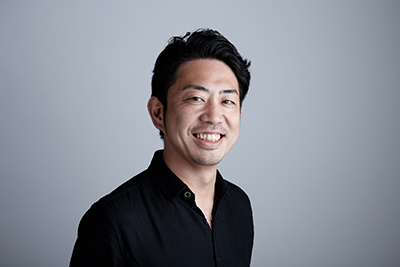
-
Industrial Designer
- Unit 02 : Life products (for healthcare and hobby)
02-01 Health care items and equipment for home use / 02-02 Beautuy care items and equipment for home use / 02-03 Medical item and equipment for home use / 02-04 Sporting goods / 02-05 Leisure/Outdoor goods / 02-06 Hobby goods/Pet-care supplies / 02-07 Garden tools / 02-08 Audio epuipment and Music instruments / 02-09 Other products for healthcare and hobby
Unit 02 is an assembly of products covering multiple categories. We kept in mind to make a fair assessment of the product aesthetics as specialists in design and examine the qualities in detail with a critical eye as ordinary consumers. The following lists the four key phrases that sum up this year's screening process.
1. "Craftsmanship in Industrialism"
"Digital Music Player DMP-Z1" (18G020170) and "In-ear Headphones IER-Z1R" (18G020155), both by Sony, have shown a high-level integration of design and technology and made us judges excited. The meticulously developed masterpieces have reached a great degree of craftsmanship, making any viewer feel the intensity and power of objects that suggest the product design of the next era. The fact that superb metal-processing technology rivaling that of Italian jewelry was seen in electronics blew us away.
2. "Product + Solution"
Big companies are increasingly shifting the focus of their business to products that offer solutions. "Walk Training Robo" (18G020124) by Panasonic offers a product and solution in one, providing a glimpse of what the manufacturing would be like in the future for leading companies. Incorporating analog and digital aspects, both of which are sincerely constructed with the users in mind, it provides a wonderful usability. We also found the subscription-based business model very interesting.
3. "Accurate Abstraction"
"Therapeutic Robot Qoobo" (18G020114) was one of the items that had mixed reviews from the judges, but I thought it deserved a big applause. Realizing that there are no reasonably priced options for therapeutic robots available, the developer has created an entirely abstract version of an animal by attaching a tail to a round cushion. Accurate abstraction and embodiment of the elements give the robot a cute and adorable impression even without complex movements and facial expressions. The future of design may depend on making an accurate abstraction.
4. "Go It Alone"
Using a streamlined production method, "Fishing Lures Tobi King 105HS" (18G020110) has been developed by a team led by professional fishers taking charge of the planning, designing, manufacturing and sales. The recent trend, which I also noticed last year, is that small organizations pit themselves against big corporations. Follow your beliefs and make more great products!
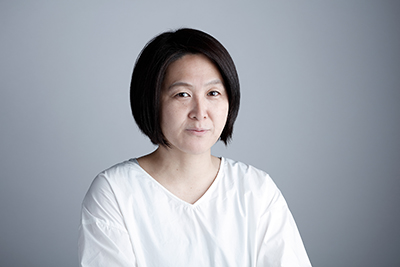
-
Product Designer
- Unit 03 : Life products (Daily necessities)
03-01 Cleaning goods / 03-02 Household nursing and Rehabilitation equipment / 03-03 Household childcare item and equipment / 03-04 Emergency supplies / 03-05 Bed clothes / 03-06 Religious supplies / 03-07 Other daily necessities
Amongst miscellaneous lifestyle and daily-use products, there were many entries of religious supplies, disaster prevention items, bedding and baby products.
As for religious supplies, simple Buddhist altars and home shrines with minimal presence that make them blend in with the interior design have stood out, some with clever features that allow for smart installation. Breaking free from traditionally used materials and crafting methods, thereby generating new value, mortuary tablets, orin bells and urns have been designed with a warm touch so that the family can feel the deceased closer. The common theme was to center the spirituality practice around the living space so that the design of each item fits right into the environment. This year's entries have incorporated clever features to honor the deceased in a simple manner that blends into the living area. This category is expected to continue to evolve and deliver value through a new approach, in pursuit of the most suitable way to honor the deceased in our daily lives.
For disaster prevention, there were many items that were developed out of envisioning many scenarios based on the current situation in which natural disasters have been occurring frequently in Japan. In addition to developing products that would be indispensable in case of disaster and improving upon their functions, excellent proposals have been made through items designed in anticipation of use outside of home (such as inside the car and at office) and systems that support the continued operation. We expect the development of a variety of experience-based disaster prevention products that would become must-have items in our daily lives.
This year, this unit also included excellent products that support the aging society, such as nursing beds that turn into wheelchairs and shopping carts designed for seniors. Sporting a sophisticated design, these age-focused items do not look any different from general products. Such appealing products that don't separate themselves for senior use are expected to increase in the near future.
Last but not least, for cleaning and storage, a few items did stand out for their excellence in simplicity, functionality and environmental friendliness. However, we expected more entries for this field considering the large number of products available on the market. We hope to receive more entries next year for this category in which the Japanese tend to demonstrate their talent.
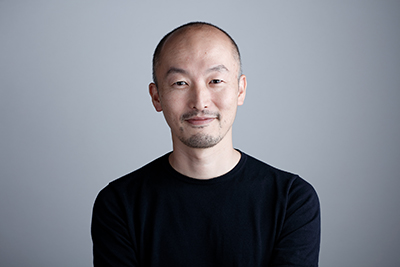
-
Product Designer
- Unit 04 : Life products (Kitchen tools and Home appliances)
04-01 Cookwares and Kitchen cleaning goods / 04-02 Cutleries and Tablewares / 04-03 Cooking utensils / 04-04 Kitchen appliances / 04-05 Home appliances / 04-06 Air conditioning appliances / 04-07 Other kitchen tools and home appliances
This unit is comprised of tools that are cherished in our daily lives such as cookware and home appliances. While information devices like smartphones have become standardized and homogenized with universal models sold worldwide, in the field of food and lifestyle, as seen in the trend where people are reexamining the local traditions and customs, it appears that consumers are starting to appreciate the aesthetics of life that have developed over the course of time and seek localized, diverse values. The products that received high praises at this year's screening panel were rather modest in their efforts to appeal their superiority in function despite adopting new features and technology to fit the modern lifestyle, but certainly demonstrated a profound insight for life.
While realizing high functionality as tools and great consideration for details, heat-resistant resin containers "Kudo" (18G040238) and "SELECT100 Bowl" (18G040245), both of which were selected for the Best 100, demonstrate beautiful craftsmanship despite being the result of mass production. Among home appliances, those that rounded off the clunky appearance due to technological features and made an effort to create harmony with daily spaces and traditional aesthetics left a great impression. "Kamado-san Denki" (18G040274) is a good example, integrating a delicate home appliance with an earthenware pot crafted by a renowned pottery. It sheds light on how the future of home appliances should be. Many of the big appliances like washing machines and refrigerators have been meticulously developed based on the specific needs of the consumers, both in Japan and abroad, and we sympathized with the creators' stance for product development that perfectly suits the diversified way of life by incorporating such needs into the design. One product that especially stood out was Panasonic's refrigerator "NR-F604" series developed for the Japanese market (18G040332) for its furniture-like elaborate design that transcends the bounds of home appliances. It successfully creates a beautiful landscape in modern homes in which the kitchen and living room are integrated.
Up to recently, daily necessities, furniture, crafts and home appliances have all been grouped into separate categories. However, the advancement in technology has started to blur the boundaries. Originally, these objects were considered organic and seamless. Product developers will be required to possess the sensitivity for customs and tradition as well as deep insights for technology, and achieve an equilibrium by connecting the two.
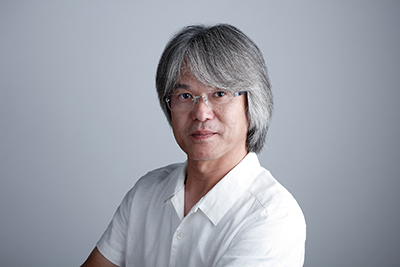
-
Product Designer
- Unit 05 : ICT equipment
05-01 Mobile phones, Cameras, Tablets / 05-02 Smart watches, Drones with camera / 05-03 Video equipment / 05-04 ICT equipment for the general public / 05-05 Broadcast and Sound equipment for professional use / 05-06 ICT equipment for professional use / 05-07 Other ICT quipment
With an array of various smart speakers available in Japan, I had high hopes for this year's Unit 05 to put forward quite a few products featuring AI, IoT and AR. However, at first glance, I personally thought that there weren't many entries that seemed new.
However, after taking a closer look, I was pleasantly surprised to find the products that appeared rather ordinary to have been equipped with AI and IoT technology and to be quietly omnipresent. They have moved their stage from conscious to subconscious. The technology is not flaunted but is naturally present, making us realize that's the way it should be when people develop technology for others.
The Good Design Award broadly defines design as "the plan for achieving the ideal or objective." Such loose definition of design is what sets it apart from other awards. For the majority of people, design generally refers to the shape, color or finish of the external appearance. While finding the balance between the broad and narrow definitions, we proceeded with this year's screening process holding "beauty" as the keyword. The beauty of the external appearance, way of thinking, solution and results… we repeatedly discussed to what degree each entry fulfills the judging criteria in terms of beauty.
While some overwhelmed the judges with their beautiful form and finish, others demonstrated how to achieve the objective through means that seem almost impossible. Some exhibited a beautiful mindset by cherishing the user's point of view instead of the corporation's and some displayed great potential to beautifully change the industry standard. Many entries that received high evaluation possessed multiple forms of "beauty," creating a wonderful synergistic effect.
It is clear that AI will drastically change our lives in the future. Figuring out what the change is for and whether the objective and results line up with human aesthetics will be the key when contemplating the future of design.
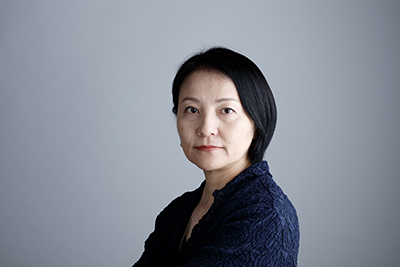
-
Product Designer
- Unit 06 : Furniture/Housing fixtures
06-01 Home furniture / 06-02 House lighting appliances / 06-03 House air conditioning facilities/fixture / 06-04 House building materials / 06-05 House interior materials / 06-06 House exterior materials / 06-07 Kitchen fixtures / 06-08 Bath room/wet area / 06-09 Built-in home appliances / 06-10 Other furniture/housing fixtures
Although we rarely see state-of-the-art technology applied, it is furniture and housing fixtures that we often come in contact with in our daily lives. In that sense, the screening for Good Design Award is significant as it always sees humans to be in the center of design. In order to screen the external appearance of a product, it is important to not only look at the aesthetics, but also examine what it is made from and how it fits into space. Also, to screen the construction, it is necessary to have data that serves as a proof for quality, durability and performance so that the consumers can use it with confidence. Since performance cannot always be gauged with a quick use, it is ideal that entries accompany actual test results that demonstrate the difference between existing products. The judging can be difficult for niche products or crafted items that cannot be identically produced. Entries that accompany another project may be considered for other units so we hope the applicants look into it. As judges, we look at whether the people living in the same space as the product can live comfortably on a long run. Another important factor is if it demonstrates novelty and distinguishes itself from existing products.
As for furniture, pieces that were shown to emanate a subtle, tranquil beauty in life were highly praised. We loved the dining room chairs that were made with compressed Japanese cedar as part of the effort to utilize domestic timber and those that were made by incorporating outstanding woodworking techniques. Both kinds of chairs were applauded for the novelty in their design along with the technology used.
Just like any other year, there were many entries for air conditioners this year. With the technology for Japanese air conditioners reaching maturity, the sensor and maintenance functions have progressed drastically. However, as for the external design, most did not look anything special. On the other hand, the products from overseas broke free from tradition and demonstrated great potential for the future. I hope that Japanese manufacturers follow suit to come up with design that is not bound by the architectural module.
In the category of house building materials, especially noteworthy are curtains, tiles and plastering materials that can control potential allergens and moderate the room temperature by changing the properties of the materials by updating them with technology. We have high hopes for new product development in the field of micro materials.
There were many entries for stove tops, which is a continued trend from last year. With the popularity of open kitchens, readily available kitchen fixtures have improved their design as they are now considered part of the home interior.
As for plumbing, simple wash basins that fit perfectly into space were highly evaluated. In addition, we also praised products that are tucked away but play an important role in making our lives more comfortable, such as a water supply pipe that reduces resistance and a pump that boosts the water pressure.
There were many lighting fixtures with LED but most seemed to lack a fresh impression. We are hopeful for the future development of products combining projectors and lighting.
Although few in numbers, there were entries with global perspectives, including those for improving the sanitary conditions in developing countries, such as simple toilet solutions and shower heads that boost the water pressure with a simple structure, which I found quite interesting.
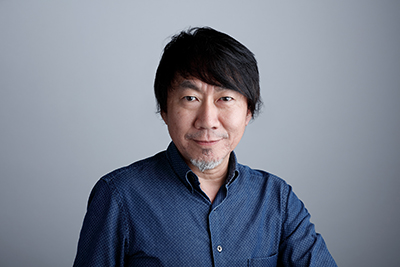
-
Designer
- Unit 07 : Mobility
07-01 Passenger car / 07-02 Accessorioes and Supplies for passenger car / 07-03 Commercial vehicle / 07-04 Accessorioes and Supplies for commercial vehicle / 07-05 Motorbike / 07-06 Accessorioes and Supplies for motorbike / 07-07 Personal mobility, Bicycle / 07-08 Accessorioes and Supplies for personal mobility and bicycle / 07-09 Railway / 07-10 Shipping / 07-11 Aircraft / 07-12 Transportation system and service/Logistics / 07-13 Other product for mobility
Today, mobility is going through a monumental reform that is said to occur only once in a century. Ever since human beings were born, the purpose of mobility has been to transport people from point A to point B. Mobility has evolved along with societal changes and technological development, in turn bringing changes to the society. Information technology has now permeated into our daily lives, drastically changing the concept of mobility. In other words, the mobility now does not necessarily involve moving something physically from one point to another. For example, car dispatching applications themselves do not move, but they optimize and accelerate the means of transportation, providing a new kind of mobility by transforming a value.
For Unit 07 that covers mobility, we evaluate entries for their beautiful appearance, careful finish and functional usability, and whether it has advanced, delved deep into and caused a breakthrough with these criteria through the power of design. We as judges also review the entries by looking at the big picture of transportation "Has the mobility brought a new eco-friendly system into existence?" "Will it support the social system in the near future?" "Has it created a new value for diversifying lifestyles?"
This year's screening results demonstrated an extremely high level of perfection in terms of design and innovative creativity in Japan's mature and key industry of automobiles, bicycles, trains, vessels and construction machinery. Entries were praised for incorporating unique ideas that increase comfort and convenience and achieving an uncompromising beautiful exterior while complying with high safety standards and various regulations.
On the other hand, among the award winners, we spotted a new wave of mobility such as smartphone applications that support various means of transport, accommodations that encourage the flow of customers, and an efficient, safe and secure urban road planning. We hope to see further development in mobility with a focus on sharing and diversity.
The history of mobility is the history of transferring human beings. In the not-so-distant future which is to be deeply impacted by AI, automation and streamlining, the relationship between humans and mobility will be called into question once again. The impact of evaluating mobility through the Good Design Award will become even more influential for the society, which makes us feel honored and humbled.
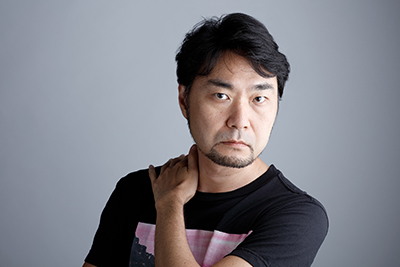
-
Art Director / Designer
- Unit 08 : Product for medical care and manufacturing
08-01 Accessorioes and personal belongings for professional use / 08-02 Working tools and supplies / 08-03 Agricultual tools and equipment / 08-04 Equipment and facilities for production and manufacturing / 08-05 Medicai equipment and facilities / 08-06 Marerials, Parts / 08-07 Manufacturing tecnology and methods / 08-08 Equipment and facilities for resarch, development, and experiments / 08-09 Other product for medical and manufacturing
The overall trend seen in Unit 08, which is comprised of products for manufacturing and medical care, is one that revealed a battle for survival and adaptivity for the drastically changing society as we enter a new era of implementing SDGs.
More than ever, designs have come to require problem-solving abilities due to issues on hand, such as those involving the aging society, decreasing working population at production sites and complicated environmental measures. The products seemed to have possessed more concreteness.
It was evident that many have attempted to depart from the design concept that prioritizes usability, functionality and specific optimization, to turn their attention to and challenge the social issues.
The noticeable trend among Japanese companies is liberation from the past. By taking an objective perspective on capitals such as past research results and know-how, they have successfully come up with projects with new interpretations and processes. It was interesting to see how those companies have converted them to new values by restructuring products and services and changing the axis involving the target, market and cost.
Bundling up a number of technologies just for the sake of equipping products with multiple functions is the thing in the past. The process of perfecting one technology reveals new themes and elements that ultimately become incorporated into a product or service. This leads to solving the issues at hand from multiple angles and creating markets that have not existed before.
To the background to this breakthrough of offering multiple solutions lies the growing demand for innovation. Reforms arise out of necessity when the industries reach maturity, so we can say that the breakthrough was possible because the business pursued excellence in their operation. Whether the efforts bear fruit and cause a breakthrough solely depends on the company's level of insight, judgement and ambitiousness to take up the challenge.
With the Tokyo Olympic and Paralympic Games being held in 2020, Japan, as an advanced nation facing a host of challenges, is moving forward with the implementation of essential design to draw a more positive future. This year's screening brought a heartfelt moment and made us want to root for the challengers for their success.
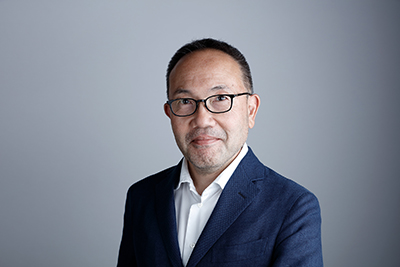
-
Product Designer
- Unit 09 : Products for shop and public space
09-01 Furniture for shop, office, public space / 09-02 Display furniture for shop and public space / 09-03 Equipment and facilities furniture for public space / 09-04 Kitchen equipment and facilities for professional use / 09-05 Equipment and facilities for professional use / 09-06 Lighting appliances for professional use / 09-07 Air conditioning equipment and facilities for professional use / 09-08 Building materials and equipment for commercial space / 09-09 Facilities for commercial space / 09-10 Other product for shop and public space
For whom are products made? For Unit 09 that deals with the B2B market, the "for whom" part is slightly different from that in the general B2C market.
The major difference is that, in the B2B market, the persons making decisions regarding orders for products and services are not the same as the recipients of the order. Therefore, product development must address the diverse needs of a variety of intended users, such as order decision-makers, managers, builders, actual users and final recipients. Under traditional business structures, gathering data regarding such needs could only be done through commercial distribution networks, making it difficult to collect information from all users. As a result, when looking for inspirations for planning, many creators have developed products by giving priority to the manufacturer's schedule, available technology and precedents.
However, in recent years, the business environment has changed drastically with the day-to-day information gathering made possible by IT solutions, emergence of globally marketed products by foreign companies and increased visitors to Japan. This has caused a shift in awareness that product development must take into consideration the global market and standards to respond to the diverse needs even for professional tools and domestic public products.
Another notable change in manufacturing is that the UI technologies are becoming widely available. Contents created by software have replaced much of hardware, redefining the role of hardware. As a result, it has become necessary to combine software, hardware and services and to establish a process that appropriately adjusts the proportions to realize the product performance requirements.
In light of such market circumstances, the awards under Unit 09 for this year went to products that show new market possibilities and those that present the best version of themselves. We concluded that they deserved the praise for their effort to bring shape to their sound logic through the most appropriate approach to designing. I continue to look forward to seeing the public products in this field leading the social environment to a better direction.
Last but not least, portable toilets offer an extremely important infrastructure that is indispensable for events and post-disaster shelters where many people gather. With the Tokyo Olympic and Paralympic Games approaching, it will become increasingly important to think once again for whom products are made and to review how product values and functions should be to prepare for the future of manufacturing.
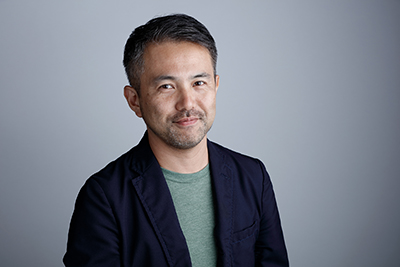
-
Architect
- Unit 10 : Housing (personal residence, small sized apartment, construction method)
10-01 Prefabricated housing / 10-02 Personal residence / 10-03 Apartment / 10-04 Small sized housing complex / 10-05 Construction method for housing / 10-06 Service and system for personal and smallsized housing/HEMS
This year's screening has brought a few interesting trends to the surface.
First, there are projects that put housing in the center of human networks. By placing housing within a support framework such as livelihood assistance and mutual aid, they have completely changed the way people see housing, which is generally perceived as a privacy shield. Since houses attract people and their curiosity, the layout and opening must be improved accordingly in terms of design.
Secondly, open, environmentally-friendly housing also caught our attention. By making the most of the intermediate spaces, the houses lend a friendly appearance to the people and the outside, offering one direction for the housing formats of Monsoon Asia.
Another trend that we have noticed was the combining of usage. The screening in other units also made it clear that the increased interest in the reform of working practices has greatly influenced product design. Residential housing in particular showed strength with houses that have combined "living" and "work" spaces and presented how to be part of the local community.
Amongst the many renovation projects, the ones that have taken into account the factors outside the house told a compelling story. The motive could vary depending on the project, whether to connect the house with the landscape and climate, offer solutions for vacant houses or make it suitable for caregiving, but they all made us realize how the method of renovation has evolved, not limiting its application to the interior.
The presence of local contractors also stood out in the screening. Their work on insulation and airtightness has improved on some level and, to further differentiate themselves, they have incorporated local materials and craftsmanship and collaborated with local architects and university personnel. We have confirmed that such efforts have led to positive results and are looking forward to seeing further development.
The common thinking behind these trends is probably that the housing is not seen as a complete product in itself.
For example, how do you deal with the current issue in which vacant houses increase as production goes up? How about the fact that the resources are limited? There is always demand for a consistent supply of high-quality housing, but does the quality only apply to the merchantability of the interior? What is the objective in designing housing? Such questions arose in the screening process this year.
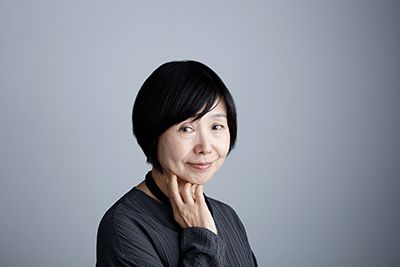
-
Architect
- Unit 11 : Housing (medium sized, large sized housing complex)
11-01 Medium/large sized housing complex / 11-02 Service and system for housing comlex/HEMS
Unit 11 also received many applications from overseas. They not only represented the high expectations placed on the Good Design Award, but also brought to light the differences in values from Japan. Regarding the social mission assumed by large housing complexes, they were designed more subjectively in Japan, engendering a sense of maturity.
Proposals that planned for urban public spaces more effectively by combining the vacant space created by large scale development with shared facilities to raise the value of said architecture as well as the location, and the opening of land that was idle from long-term development activity until its completion as a hub for the community, were projects that can be called designs of time and have a scale over a certain level that is distinctive of Unit 11, and opened up possibilities for designs only achievable because of the time available.
Also, it was a significant result to be able to see the bold challenges in efforts in cooperation with the government, such as constructing parks that coordinated with the overall plan and could be directly accessed from housing sites in residential area development, and rebuilding public housing from RC-structure multistory housing complexes to wooden single-story housing, capitalizing on the characteristics of location. To no small extent, the plans were possible because of the cooperation between the private and public and the developers and residents that transcended the conventional framework. Furthermore, the project to build a joint establishment of apartments and a facility for the elderly was not a conventional joint establishment, but a plan that superimposed the living activities of the residents, which also exceeded existing building types. There was a presentiment that in the future, it will become necessary to transcend work domains and buildings types, not just aiming for the completion of a building, but taking an open-ended stance spatially and temporally. Of course, a "beautiful design" that can be called a Good Design, is also essential.
On the other hand, it was very interesting to see a loquaciousness and boldness that could not be measured with the same scale in applications from abroad and overseas entries. Undoubtedly, there is room for opportunity for them to share values that Japan attained first and for designers in Japan to learn from their energy.
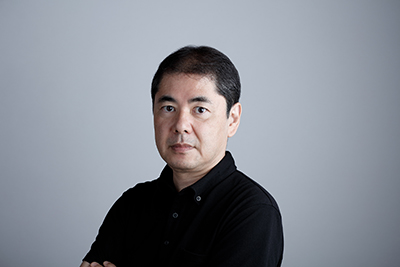
-
Architect
- Unit 12 : Construction/interior for industry, commercial facilities and public facilities
12-01 Construction/space design/sign system for industries / 12-02 Construction/space design/sign system for commercial facilities / 12-03 Construction/space design/sign system for public facilities / 12-04 Landscape, civil engineering structures / 12-05 Block and community development / 12-06 Construction method for industry, commercial, public facilities
The situation for this year's Unit 12 covering "construction/interior for industry, commercial facilities and public facilities," was in one word, excellent.
Architectural units receive many applications each year and it is a so-called battleground for the Good Design Award, but this year it seemed the quality was high compared to previous years. In fact, ten entries were chosen for the Good Design Best 100 that is screened in conjunction with other units, and the high quality of entries felt during screening was reflected in the results objectively as numbers.
While interest has grown in "soft" aspects like "activity" and management "schemes" in architectural units in the past few years, interest has faded in the hard aspects like "tangible objects" and "materials," seeming to make conspicuous the loss and lack of "shape." However, this year, entries continued to show interest in the soft aspects, but also sufficiently applied them to the architecture. The distinct bridging from "activity" to "shape" led to high praise even in discussion among other units. In addition, characteristic of the present year was that entries transcended existing frameworks for "civil engineering," "landscape," or "architecture," and generated persuasive "shapes" that were noticeable.
On the other hand, entries that laid emphasis on schemes and activities, but were lacking a sense of presence as architecture or tangible objects as a result, did not garner awards. At the same time, entries that were beautiful but did not suggest activity, rationality, or sociability from their "shapes" did not communicate praise-worthy hints among the judges and suffered defeats, but it should also be noted that entries classified as such were surprisingly numerous.
Designs that will guide the next generation, are beautiful but not limited to their shape, linked to activity, and have proper meaning were victorious this year, ending in appropriate results.
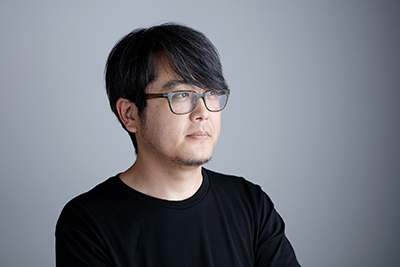
-
Art Director
- Unit 13 : Media, Contents, Package
13-01 Media / 13-02 Contents for the general public / 13-03 Contents for business / 13-04 Method for advertisement/PR / 13-05 Exhibition/display / 13-06 Branding/CI/VI / 13-07 Font / 13-08 Packaging services for the general public / 13-09 Packaging services for professional use
This unit mainly screened media, contents, and package. At first glance, these may seem to be markedly different domains. However, considering that the designs make users aware of the "value" that the originator wants to provide society and are for continued use, there are many things common in their roles.
The screening criteria valued by the screening unit this year was that the entry was not simply limited to décor but had functionality, created new communication, and had reasonable consistency in its contents and appearance. When entries were judged with these criteria in mind, "pairing," "inbound," and "commoditization" were three keywords that surfaced as trends for the unit this year.
The most significant trend was "pairing." There were many cases that paired together existing resources and succeeded in creating new value: bubble wrap and ukiyo-e; chocolate and rice crackers; coffee and AI; traditional performing arts and digital; agriculture and sake, etc. Even among these, the "Shibuya PARCO rebuilding work temporary enclosure" (18G131129) selected for the Good Design Best 100 was a vivid, popular design that synchronized reality and manga, and "kubota seppou" (18G131085) had a package design that succeeded in perfection, as well as in creating a new user experience of enjoying sake outdoors.
Next was the "inbound" keyword, which seemed to reflect the increase in foreign visitors to Japan in recent years and the significant turning point that will be the Tokyo Olympic and Paralympic Games in 2020. In reality, there were many entries conscious of transmitting culture abroad and of the hospitality of visiting foreigners. "GACHA" (18G131137) especially focused on the seemingly trivial issue of small change left over after sightseeing and created a new business platform at airports.
On the other hand, there was also a trend of "commoditization." This year, there seemed to be few entries with pronounced innovativeness or creativeness. While designs of this unit domain mature, a stable period may have been reached, and perhaps in reflection of this situation, many designs pairing existing resources were prominent. If this situation were to continue, not only novelty and impact, but whether more essential values are created or problems solved will become points for evaluation.
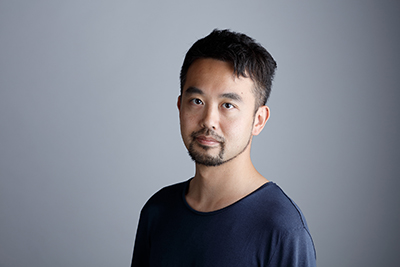
-
Information Studies Researcher
- Unit 14 : Application/System/Service for the general public
14-01 Application, software for the general public / 14-02 System, service for the general public / 14-03 Insurance/financial service, system / 14-04 Interfaces for the general public equipment
Due to the restructuring of unit divisions, this year's Unit 14 had fewer entries for the second screening and those that passed compared to the average year. Meanwhile, five entries were selected for the Good Design Best 100, and wonderful service products were also noticeable. Normally, services for general users point to businesses with commercial outlooks, called B2C, but at the same time, entries with a "public" perspective were also rated highly as usual. Domains that should be assumed by the government but are not well developed, were independently tackled by corporations, NPOs, and research institutions of universities and other organizations that groped for methods to manage both "profit" and "morality," which could be perceived as extremely positive for society as a whole. Personally, "beauty," which was one of this year's screening themes, caused a feeling of opportunity for social reorganization as such, and service products that answered unvoiced opinions and fermented inclusive relationships were highly rated.
Below is a review of the services of Unit 14 chosen for the Good Design Best 100.
A support app for an intractable disease, "SMAiLEE" (18G141138) was an effort to complement the medical treatment of SMA (spinal muscular atrophy) that tends to become costly, by having patients' family members rehabilitate patients at home and share that situation with doctors via the internet to accumulate information and search for better treatment. The tsunami evacuation drill app "NIGETORE" (18G141139) allowed evacuation drills using a virtual visualization of a tsunami in locations with a high possibility of tsunami damage, but also incorporated the purpose of searching for problematic points in present evacuation routes by analyzing the app's usage data. Both of these had in common a research stance of accumulating usage data from the information service to be applied for bettering treatment or disaster prevention. At a time when "AI will optimize it" is a worn-out catch phrase that is seen everywhere, the future-oriented design of endeavoring to problem-solve by collecting high quality data was highly praised.
The clothing renovation service "LOOP CARE" (18G141142) and the hospital specializing in stuffed toys "Stuffed Toys Hospital" (18G141141) were both services that repair old things to promote loving attachment and long use. As Yanagi Muneyoshi explained in Zakki No Bi, habitually using familiar everyday items is an autonomous action of generating value, and the fact that these two services supported such ability development was to be praised.
Last but not least, the integrated community care system "NarrativeBook in Akita" (18G141140) records the process of elderly death by disease from the perspectives of both the doctor and patient and proposes a book that will become a valuable article left by the deceased for the family. Although there have only been two precedents, the entire screening team agreed that it is an important effort for future society. Modern medicine has pushed forward objective diagnostic techniques, but in the future, supplementing the problem of subjective value will become important. The NarrativeBook got a head start on this problem, calling our attention to an important perspective for all of us living today.
I hope to continue seeing many entries of service products with outstanding social perspectives like the above in Unit 14 in the future.
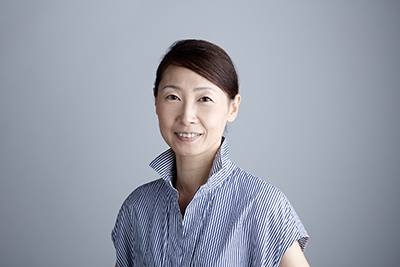
-
Design Director
- Unit 15 : BtoB software, system, service, activities
15-01 Software for professional use / 15-02 Systems/services for professional use / 15-03 Interfaces for professional use equipment / 15-04 Social infrastructure systems and infrastructure / 15-05 Business models / 15-06 Resarch and development methods / 15-07 Awareness improvement and management methods for industries / 15-08 Other activities for industries
Projects entered for Unit 15 brought to light problems in society. Many people have said the phrase "looking at the award recipients of all Good Design Awards allows you to read the trends of the times" since long ago, but encompassing business models and business software, Unit 15 realizes efforts to solve urgent problems in the form of services, making it particularly easy for trends to appear. This year was a year of "work style reforms." Its scope covered various categories, including software, in-house activities, and service businesses. Good services that reformed workplace systems had gathered. They had three characteristics. The first was the planning of systems that carefully handled the issue of worker spirit and that made use of the perspectives and opinions of young people without managerial positions. The second was that there were many businesses demonstrating that by changing the awareness and tasks of middle management, the entire operation changed. Joining the first and second characteristics, the issue of work style reform focused on improving administrative tasks. The third was the trend that with the progress of AI, there were many services and software that released people from routine work. It was generally recognized that work style reform had been voiced but with little progress for a long time; however, this year's entries showed deep insight, grasped the true nature of the problem, and proposed a new approach for "people to work like people." In other words, there was an increase in high quality business proposals based on refined design techniques. With exceptional designs of multifaceted categories, there is anticipation for change to occur in work styles in Japan.
The increase in the number of entries was as considerable as in previous years. The number of entries for Unit 15 increased by 50% from two years ago to last year and from the previous year to this year. Though the increase in the number of entries and the number of projects actually occurring in society are not equivalent, there is great value in that projects executed from the need to solve problems have become recognized as "designs," leading to their entries. By "designing business environments," there is hope for a society that is both rich in spirit and problem-solving ability.
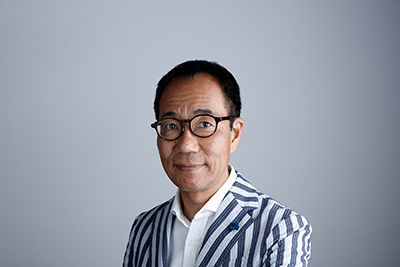
-
Creative Director
- Unit 16 : Activities for the general public
16-01 Education/promotion/support methods / 16-02 Awareness improvement for individuals and public / 16-03 Activities for regional/community building / 16-04 Social contribution activities / 16-05 Other activities for the general public
Unit 16 covers "activities for the general public." The entries are mainly from the fields called "social design" and "community design." There are many wonderful efforts with social meaning in the world. Of these, which efforts can be described as "good designs?"
"Is the effort beautiful?" was what was most discussed among the judges. Even with graphic and product design, the criteria for "beauty" is varied. Moreover, for the beauty of tangible and intangible "efforts," a wide perspective is demanded for its evaluation. The judges are professionals of a variety of genres, but as if the applicants themselves had gathered, various discussions were repeated regarding deciphering the social backgrounds of each entry from their respective points of view, whether a brand-new proposal was being made, whether a problem-solving proposal was being made, and the possibilities for the future.
Another important screening item was the "structure," or in other words, the "design of the process." How did the process born from design-oriented thinking change society? Regarding this point, evaluation was based on not only novelty, but also on actual results. Among the Unit 16 entries, there are many projects that were started several years or, in some cases, over a decade ago. Seeing the award winners, you may wonder "why now?" However, this simply denotes that the project realized results now and bore fruit immensely.
Lastly, for those whose entries regrettably did not gain awards, please know that the level of this year's entries was exceptionally high. This is my third year acting as judge, but each year, I have felt the level rise. Many entries with high potential that may have passed the second screening last year or the year before were not able to pass. This did not in the least indicate they were not "good projects." Understand that many entries were left out of the selection after much, much deliberation.
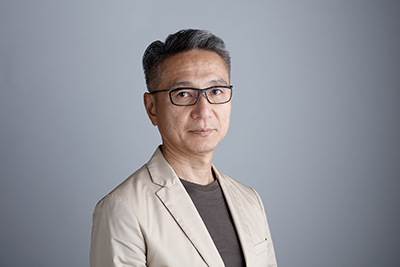
-
Industrial Designer
- Unit 17 (Korea)
I judged the Korean unit for the first time in four years.
Compared to that experience when nearly half of the entries deviated toward several specific companies and were limited in field, there were products entered from various makers and diverse fields. What remained unchanged was the highness in quality of the design. Above all, information device-related products that can be called a specialty had maintained their usual high level. While the number of entries was less than usual, both entries chosen for the Good Design Best 100 were items from this field. They were a projector and PC display that could be said to have already been commoditized, but showed the flexible mindset and innovative spirit of a surprisingly novel idea and elaborated on even the details. Behind the innovativeness of both was certainly an improvement in the level of designers, but also that the main components were developed in-house cannot be overlooked. It cannot be denied that Korea's strengths in displays like OEL and LCD and semiconductors were one source for their innovative designs in this field, and the superiority of products developed with that foundation will probably continue for some time.
There were also many household appliance entries. It was also notable that products concerned with health, especially related to air and water, predominated. Air purifiers and water purifiers had high average scores and many award winners. Products entered from small and medium enterprises and venture businesses comprised items overflowing with ideas for small-scale markets and having high levels of perfection, that large corporations could not attempt. On the other hand, products from makers considered regulars did not show novelty in ideas and seemed to conform, and the judges were all in agreement of their honest impression that there was almost a feeling of saturation.
And in addition to the tangible, interest in intangible objects is building. Attention was paid to future trends, such as projects that promote the development of traditional crafts through design and efforts to achieve the revitalization of provincial cities through events and refined designs; these had the hidden potential to lead to even newer efforts.
MADE IN KOREA is conquering the world market in several fields undeniably, but rather than focusing its target on the smaller domestic market, they supplied items demanded worldwide and grew stronger by competing with rivals from around the world. Even regarding design, Korean designers gained prominence not only for information devices and household appliances, but also in fields like automobiles. In the past, a Korean designer had talked about working hard with the goal of winning in the Good Design Award, but it seemed as if a different age had arrived at this screening.
The Taiwan screening for this year's Good Design Award had a relatively low passing rate compared to the screening in Japan. Nevertheless, within the unit of judges participating from Japan and from within Taiwan, constructive proposals and active discussions were held energetically and even reflecting now, the second screening was extremely fulfilling. In particular, due to a suggestion by Chairperson Shibata, who participated in the Taiwan screening this year, a substantial amount of time was spared for discussion on how to evaluate from the perspective of the Good Design Award the PC bodies and peripheral equipment developed for electronic sports (e-Sports). It is a multiplayer videogame matches considered to be competitions and is overwhelmingly popular in Taiwan in recent years. The discussion focused on heat dissipation from the PC body to tolerate long usage, as well as decorativeness of design, including shape and applying illumination. After such discussions, the 100 candidates that ultimately remained in the top ranks were by no means inferior even compared to the Good Design Best 100 candidates from Japan, and as can be seen from the especially high-quality designs assembled from a wide range of fields, the quality of designs from Taiwan has improved tremendously in recent years. Furthermore, it was clear that high quality designs were increasing in an even wider range of fields, not only in the field of product design represented by industrial products that already had established reputations, but also in graphic design like media and packaging, and in the design of efforts for the general public. On the other hand, even though there were many entries for interior design and construction centered on housing, few entries were of high enough quality to pass the second screening in this field, so there is anticipation for its growth in the future.
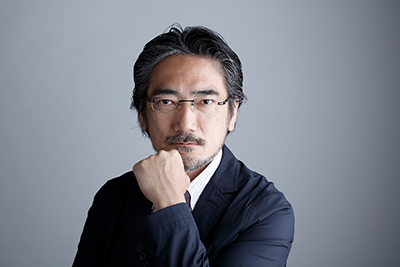
-
Industrial Designer
- Unit 19 (China, Hong Kong)
The Hong Kong unit accepts entries from all areas of China and covers all domains, including the tangible and intangible. The number of entries was approximately 50% higher than the previous year and has continued to increase since the Hong Kong unit was established. The causes include the growth of Chinese industry, the popularization of the Good Design Award, and the fact that design has begun to be recognized as business value.
As one factor in the growth of Chinese industry, attention is drawn to new services like bicycle sharing made possible by the reform in payment systems like Alipay and WeChat Pay, but among this year's entries, there were no distinguishing proposals for system or structure design. On the other hand, the other trend of revitalization in the manufacturing industry showed a departure from the country being the world's production base and a furtherance of developing company brands. There were many entries from young companies, like start-ups and venture businesses, with technology and equipment developed through their role as production base, engendering an overall impression of motivation for development. However, individually, entries of prototypes still in development stood out, as if in a rush for productization, making it necessary for evaluation on appearance to be made stricter. More troubling was the lack of product concept, with many entries beginning and ending in explanations of the specifications during the interactive screening and not being able to adequately communicate the crucial development idea, relation to lifestyle scenes, solving of social issues, etc. Since the purpose of the Good Design Award is transitioning from exterior value to the role of searching for a future standard and leading society in a good direction, the Award attempts to catch the thoughts behind the object and elevate it, but there were few attractive proposals that met expectations. The number of award winners stagnated this year due to the issues of appearance and concept.
Amid this situation, a company that won awards for many items and outshone other companies was Xiaomi Inc., which started out as a venture business and grew rapidly in a short period of time. The company is characterized by balanced product development, with necessary and sufficient functions finished to a high standard and provided at a low cost, and two of its items were chosen for the Good Design Best 100 last year as well. With unstoppable vigor, Xiaomi continues to widen its business domain this year, but what must be stressed is that while the number of its items is increasing rapidly, their quality does not degrade, and product identity is being controlled. This shows an understanding of design as a management resource and is possible only with powerful management. Although this point can be highly praised, one concern is that, as with product identity, originality is difficult to perceive. There may be various ways of thinking in terms of management policy, and judgement of the originality of designs is a difficult problem, but sufficient consideration in product development is desired since the company grew to become a large corporation looked up to by rising venture businesses.
This year's Hong Kong unit resulted in Xiaomi taking the spotlight alone, but considering the status of Chinese economic development, a high level of rivalry should have been seen in each field. Next year, there is anticipation that China's burgeoning industrial competitiveness will make its presence felt for the screening of the Good Design Award.



